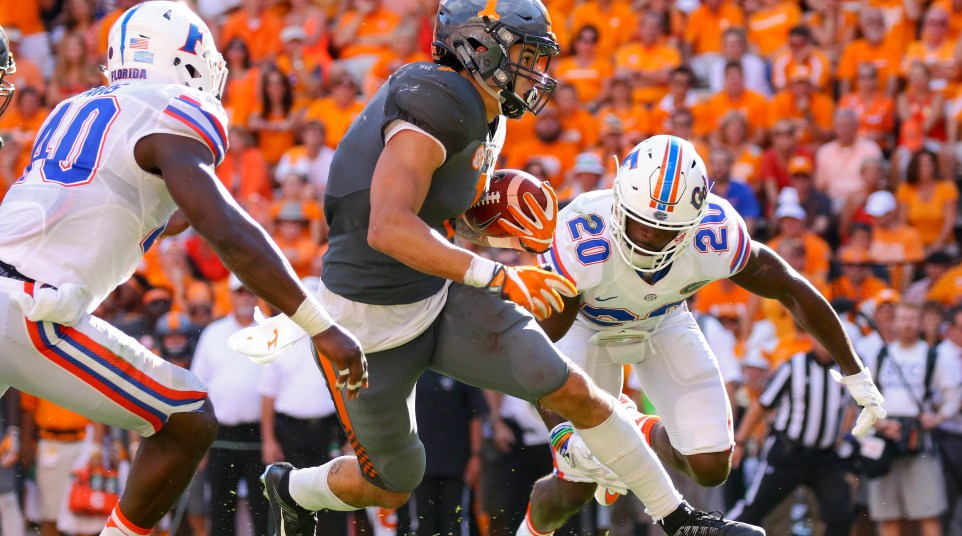
What's wrong with Jalen Hurd? Former Vols RB Jabari Davis has a clue
KNOXVILLE, Tenn. — Throughout the first five games of the 2016 season, Tennessee has looked great at times offensively.
The other times, the Vols have looked like a team that has mirrored Butch Jones’ early teams searching for a will to win.
Perhaps nobody embodies that rollercoaster ride more so than Jalen Hurd.
Hurd is approaching the Tennessee record for rushing yards in a career — but wasn’t even on the field during the Vols’ fourth-quarter miracle at Georgia.
Was he hurt? Was he benched?
Butch Jones said his star back was injured, but many wondered whether Hurd’s careless fumble that wiped out a sure touchdown was an underlying factor.
That episode aside, Hurd just hasn’t been … Hurd.
His yards per carry are down and he’s had just one 100-yard day — in the opener against Appalachian State.
That’s leading some to wonder whether it’s something else, perhaps the system.
Is it a perfect fit, a prototypical power back in a spread offense? No, not at all.
Would Hurd benefit benefit from being in a traditional pro-style running attack? Probably so.
But it might not be the best solution in today’s game to quickly call for the pro-style attack. Former Tennessee running back Jabari Davis, who flourished in Phillip Fulmer’s pro-style attack offense, keeps in mind how today’s game has changed.
“I like what I see in the running game,” Davis said of the 2016 Vols. “But with me as an old-school running back, I understand that the game has changed.”
The spread gives coaches the ability to open the playbook. Tennessee proved last season that the running game can be a strong presence while having three receivers spread out and quarterback Josh Dobbs in the backfield, Hurd often to his side.

Credit: Randy Sartin-USA TODAY Sports
The Vols finished with the second most rushing yards for a season in school history last year — and Hurd was a huge part of it, gaining 1,288 yards.
So what is different this year?
Schematically, not much, though the same line that has failed to protect Dobbs at times also has struggled to create running lanes for Hurd.
Davis thought Hurd would benefit from having a lead blocker, even occasionally.
Davis had one in Fulmer’s offense, and he knows what Hurd’s ability is with and without playing in a pro-style attack.
“Hurd with more opportunities with a lead blocker, getting him downhill, getting his shoulders square,” Davis said. “I think the offense that we run isn’t designed for him to get big runs. It’s designed for him to get 15 yards here, a 5-yard run here, another 20 yards there.
“If we were to get in a more power running game, get him a lead blocker, you would see more like you would from a Leonard Fournette, a Wisconsin back, or a Nick Chubb and Todd Gurley-type. At Tennessee, we just don’t use the fullback like we used to.”
While’s it’s fun to imagine Hurd running behind a lead fullback out of the I-formation, the reality is it’s not close to happening. Tennessee’s approach to a power run game from shotgun has worked.
“What we’re doing has been working,” Davis said. “We’re getting everyone involved, and whatever angels we have on our side, we have to continue using them. Right now we have success and we’re 5-0, first time since 1998. It’s just about finishing games.”
Hurd’s struggles, in particular, are more noticeable when the offense bogs down.
“Of course I want to see Jalen get the big run,” Davis said. “He rarely gets to showcase the home-run speed that he has because he’s just not in that type of offense.”
